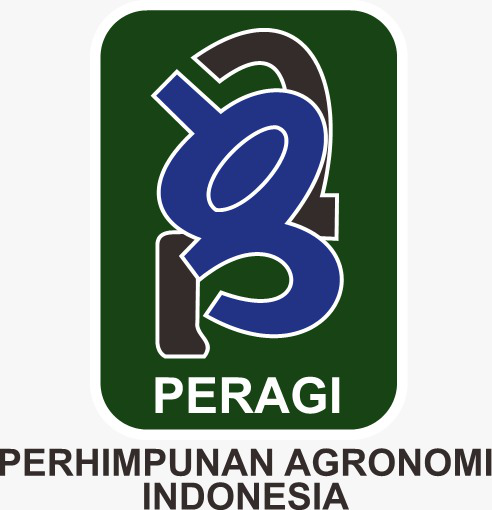Qualitative and Quantitative Traits of Katokan Toraja Cayenne Pepper Varieties (Capsicum annuum)
Abstract
The Katokkon Toraja chilli, scientifically known as Capsicum annuum, is a locally Indigenous chilli variety found in Toraja, South Sulawesi, Indonesia. Renowned for its exceptionally high level of spiciness, this type is particularly popular among aficionados of spicy cuisine. This study was carried out at Labuhanbatu University to examine the qualitative and quantitative attributes of the Katokkon Toraja (Capsicum annuum) chilli variety. This study aims to identify the unique attributes of this particular variety in terms of its floral structure, leaf color and shape, and the appearance and color of its fruit. The approach employed in this study was a non-factorial completely randomized design (CRD), wherein the parameters examined encompassed plant height, number of leaves, and number of fruit. Based on qualitative data, it can be observed that Katokkon chili flowers exhibit a slightly upright spreading position, light green leaves, tapered curved fruit, and curly and slightly curved leaves. In the meantime, the chili fruit exhibits a range of color variations, spanning from dark green to reddish-orange, serving as indicators of varying degrees of ripeness and nutritional composition. The study's quantitative findings indicate no significant differences in plant height and number of leaves among the plants. This lack of variation could be attributed to genetic factors and a consistent approach to environmental management. The results suggest that the Katokkon variety exhibits uniform vertical growth and leaf count, which is significant for strategic planting and overall plant care. This study offers significant insights for agricultural workers in effectively managing Katokkon Toraja (Capsicum annuum) chili varieties and serves as a foundation for improving cultivation methods to enhance yield and produce higher-quality crops.Downloads
References
Chairiyah, N., Murtilaksono, A., Adiwena, M., & Fratama, R. (2022). Pengaruh dosis pupuk NPK terhadap pertumbuhan vegetatif tanaman cabai rawit (Capsicum frutescens L.) di tanah marginal. Jurnal Ilmiah Respati, 13(1), 1-8.
Priyono, A., & Triadyaksa, P. (2020). Sistem penyiram tanaman cabai otomatis untuk menjaga kelembaban tanah berbasis esp8266. Berkala Fisika, 23(3), 91-100.
Gulo, T. (2023). Identifikasi serangga (insekta) yang merugikan pada tanaman cabai rawit di Desa Sisarahili Ekholo Kecamatan Lolowau Kabupaten …. Jurnal Sapta Agrica, 2(1), 50-61. https://jurnal.uniraya.ac.id/index.php/Agrica/article/view/917 https://jurnal.uniraya.ac.id/index.php/Agrica/article/download/917/833
Jaya, I. K. D., Santoso, B. B., & Jayaputra, J. (2022). Penyuluhan tentang budidaya tanaman cabai di luar musim di lahan kering Desa Gumantar Kabupaten Lombok Utara. Jurnal Gema Ngabdi, 4(1), 68-76.
Maulana, Z., Tonggo, I. I., Muhibuddin, A., & Nasution, A. (2023). Pendugaan parameter genetik tanaman cabai katokkon (Capsicum chinense Jacq.) dengan iradiasi sinar gamma. Jurnal Ilmiah Respati, 11(2), 65-69.
Naiborhu, S. A. A., Barus, W. A., & Lubis, E. (2021). Pertumbuhan dan hasil tanaman kailan dengan pemberian beberapa kombinasi jenis dan dosis pupuk bokashi. Jurnal Rhizobia, 3(1), 58-66. https://doi.org/10.36985/rhizobia.v10i1.465
Raras, R. P., Saptiningsih, E., & Haryanti, S. (2021). Respon tanaman cabai rawit (Capsicum frutescens L.) varietas Pelita F1 terhadap penggenangan. Buletin Anatomi Dan Fisiologi, 6(1), 56-65. https://doi.org/10.14710/baf.6.1.2021.56-65
Wulandari, V., Senolinggi, P., & Nasution, M. A. (2024). Pengaruh iradiasi sinar gamma terhadap pertumbuhan dan produksi tanaman cabai katokkon (Capsicum chinense Jacq.). Pallangga, 2(1), 38-45. https://doi.org/10.56326/pallangga.v2i1.2977
Copyright (c) 2024 Suharman Prayuda, Siti Hartati Yusida Saragih, Yudi Triyanto, Yusmaidar Sepriani

This work is licensed under a Creative Commons Attribution 4.0 International License.
Authors who publish with Jurnal Agronomi Tanaman Tropika (JUATIKA) agree to the following terms:
Authors retain copyright and grant the Jurnal Agronomi Tanaman Tropika (JUATIKA) right of first publication with the work simultaneously licensed under a Creative Commons Attribution License (CC BY 4.0) that allows others to share (copy and redistribute the material in any medium or format) and adapt (remix, transform, and build upon the material for any purpose, even commercially) with an acknowledgment of the work's authorship and initial publication in Jurnal Agronomi Tanaman Tropika (JUATIKA).
Authors are able to enter into separate, additional contractual arrangements for the non-exclusive distribution of the journal's published version of the work (e.g., post it to an institutional repository or publish it in a book), with an acknowledgment of its initial publication in Jurnal Agronomi Tanaman Tropika (JUATIKA). Authors are permitted and encouraged to post their work online (e.g., in institutional repositories or on their website) prior to and during the submission process, as it can lead to productive exchanges, as well as earlier and greater citation of published work.







 More Information
More Information



